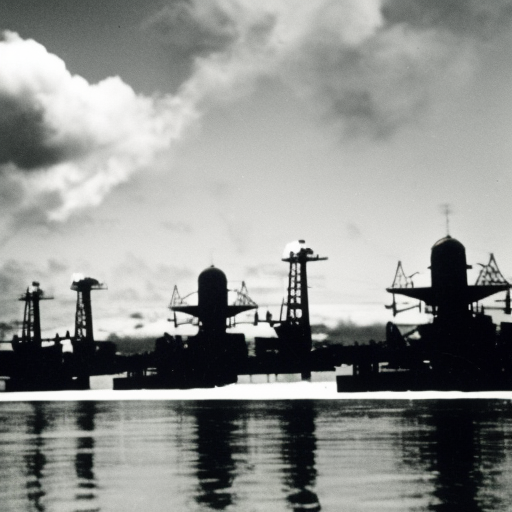Summary:
The attack on Pearl Harbor was a surprise military strike by the Imperial Japanese Navy against the United States naval base at Pearl Harbor, Hawaii, on December 7, 1941. The attack, which lasted for about two hours, resulted in the deaths of 2,403 Americans and the destruction of numerous ships and aircraft. It marked the entry of the United States into World War II.
Background:
In the early 1940s, tensions between the United States and Japan were escalating due to Japan’s aggressive expansion in Asia. The United States had imposed an embargo on Japan, which severely limited their access to vital resources, including oil. In response, Japan sought to cripple the US Pacific Fleet, which they saw as a threat to their expansion plans.
The Attack:
On the morning of December 7, 1941, a fleet of Japanese aircraft carriers launched a surprise attack on the US naval base at Pearl Harbor. The attack began at 7:55 am and targeted the battleships, aircraft carriers, and other military installations at the base. The Japanese planes dropped bombs and torpedoes, causing extensive damage to the American fleet.
Damage and Casualties:
The attack on Pearl Harbor resulted in the sinking or severe damage of eight battleships, including the USS Arizona, which was completely destroyed with the loss of over 1,100 crew members. Additionally, three cruisers, four destroyers, and numerous aircraft were also destroyed or damaged. The attack left the US Pacific Fleet crippled and unable to effectively respond to further Japanese aggression.
Response and Declaration of War:
Following the attack, President Franklin D. Roosevelt addressed the nation, calling December 7, 1941, “a date which will live in infamy.” The next day, the United States declared war on Japan, officially entering World War II. The attack on Pearl Harbor united the American people and galvanized their support for the war effort.
Impact and Legacy:
The attack on Pearl Harbor had far-reaching consequences. It propelled the United States into a global conflict that would ultimately result in the defeat of the Axis powers. The attack also led to a significant shift in public opinion, with Americans becoming more supportive of the war effort. It marked a turning point in World War II, as the United States emerged as a major player on the world stage.
Aftermath:
In the aftermath of the attack, the United States launched a massive effort to rebuild and strengthen its military capabilities. The damaged ships were repaired, and new ones were built to replace those lost. The attack also led to the internment of thousands of Japanese Americans, as there were fears of potential espionage and sabotage.
Conclusion:
The attack on Pearl Harbor was a pivotal moment in history, as it brought the United States into World War II. The surprise attack resulted in significant damage and loss of life, but it also united the American people and galvanized their determination to defeat the Axis powers. The legacy of Pearl Harbor lives on as a reminder of the importance of preparedness and the consequences of underestimating the capabilities of one’s adversaries.












